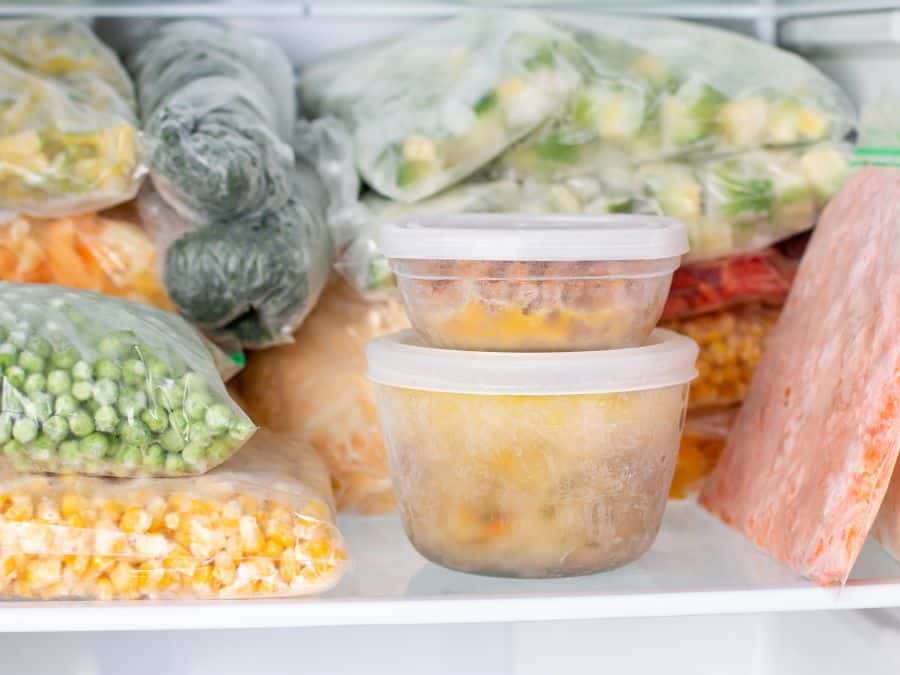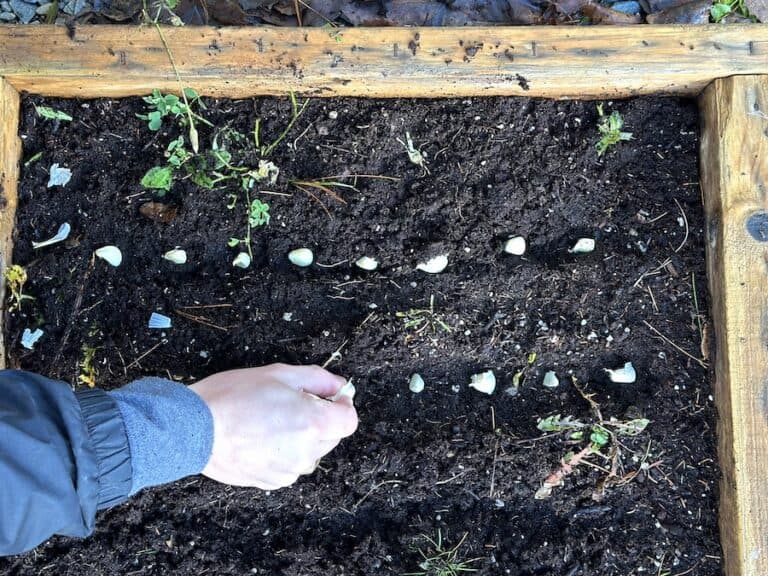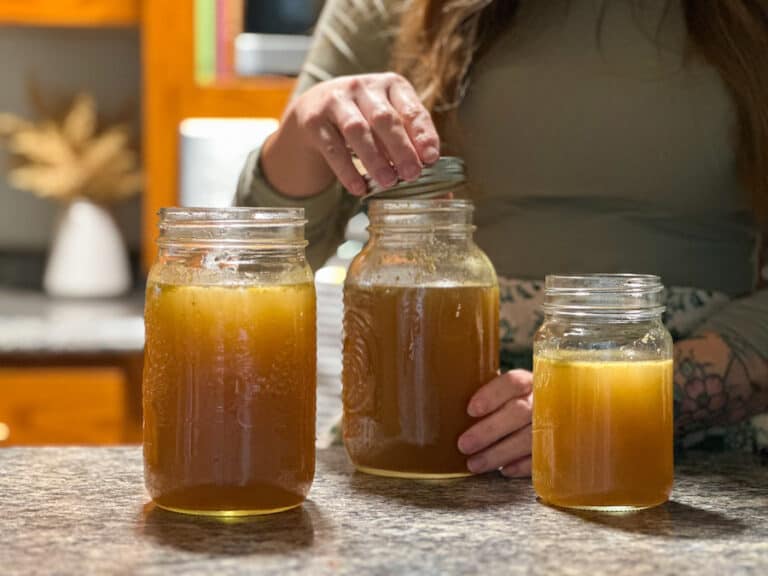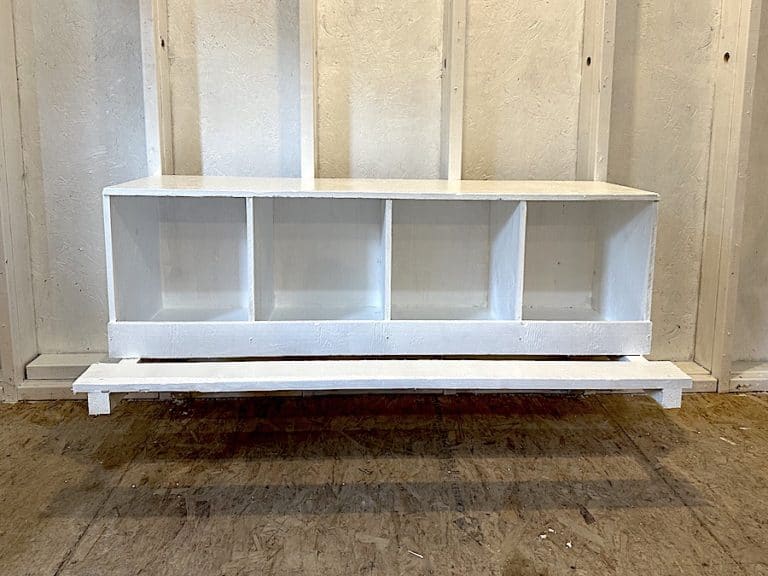5 Ways Your Freezer Can Save You Money & Time

One often overlooked yet essential tool for preserving foods long-term and saving money is a freezer. Your freezer can be a powerful asset for cutting costs, promoting sustainability and reducing food waste in your home. In this article, we will explore five ways your freezer can help you significantly reduce your grocery bills!
Disclaimer: This article includes affiliate links. If you click one of them, we may receive a small percentage of the sale at no extra cost to you. Thank you for your support!
5 Ways Your Freezer Can Save You Money & Time

We use our deep freezer for everything. It has become quite a valuable asset to us as it allows us to store our leftover harvests, leftover meals and bulk items to help cut costs and reduce our food waste. If you have a freezer but are not sure how to utilize it to save money (and time), you’ve come to the right spot! Here are our top five ways to save money and time by using a freezer.
1. Freeze Your Harvest
If you are fortunate enough to have a garden, consider freezing surplus fruits, vegetables, and herbs. This allows you to enjoy your homegrown produce throughout the year, avoiding the need to purchase these items at higher prices during off-seasons. While we do can some of our fruits and vegetables, it is not the best option for low-acidic food unless you have a pressure canner, which is why freezing is a great and affordable way to preserve.
To keep the freshness of produce when freezing, you should blanch the vegetables beforehand. Blanching involves briefly immersing vegetables in boiling water, followed by an immediate plunge into ice water. This method helps to preserve colour, flavour, and texture while deactivating enzymes that can cause spoilage
2. Buy In Bulk
One of the primary advantages of owning a freezer is the ability to buy in bulk. Whether you grow your own produce or purchase items in larger quantities from local farmers or grocery stores, freezing allows you to preserve perishables before they go bad. This strategy not only reduces food waste but also helps you to take advantage of bulk discounts, ultimately lowering your overall grocery expenses.
Our Favourite Foods To Bulk Buy & Freeze Are:
- Meats (chicken, ground meats, sausages, pork chops)
- Seafood (fish, shrimp, scallops)
- Butter
- Bread (loaves, bagels, tortillas)
- Vegetables & fruits
- Soups & stews
3. Shop For Sales
Shopping for sales is a great way to save money on foods that are close to their expiration date, as they are often 30-50% off. You can purchase these items at a reduced price and either cut them up and freeze them for later use or create a bulk meal to freeze, extend their shelf life and have pre-ready meals. This is a smart way to make the most of your grocery budget while also reducing food waste.
Depending on where you live and shop, some stores offer reduced items earlier in the morning (where we live in Nova Scotia, the ideal time to shop for half-priced groceries is between 7:00 a.m. to 8:00 a.m.), or when it’s stock day at your local store as older produce will go on sale to make room for newer items.
4. Prepare Meals Ahead Of Time
In the fast-paced world we live in, time is a precious commodity. Your freezer can be a time-saving ally by helping you prepare meals in advance. Batch cooking and freezing portions not only simplify your daily routine but also reduce the temptation to order takeout or dine at restaurants, leading to substantial savings over time.
Along with prepping meals, you can also prepare and freeze soups and broths. Homemade broths and soups are not only nutritious but also economical. By preparing large batches and freezing them in individual portions, you can create a convenient and cost-effective supply of ready-to-eat meals. This approach eliminates the need for store-bought alternatives.
5. Freeze Leftovers
Rather than throwing away leftovers or forgetting about them at the back of your fridge for days, try putting your leftovers in freezer-suitable containers and place them in the freezer. This not only prevents food waste but also provides a quick and easy option for busy days when cooking from scratch is not something you want to do. By maximizing the use of your freezer, you can cut down on unnecessary food expenses and contribute to a more sustainable lifestyle.
How To Freeze Produce For Long-term Storage
Depending on what you are freezing, there are a few methods that can help preserve the colour, flavour and quality of your produce. We suggest looking at the FDA Refrigerator Freezer Food Chart as a guide for how long food items in the freezer will last.
How To Blanch Vegetables For Freezer Storage

Thoroughly wash vegetables and bring a large pot of water to a boil.
Place Washed vegetables in a blanching basket or sieve and immerse them in the boiling water for a specified time (varies by vegetable type).
Quickly transfer the blanched vegetables to an ice water bath to stop the cooking process.
Drain the vegetables and let them fully dry before transferring them to the freezer bag or freezer-safe container.
How To Prepare Fruits For Freezer Storage

Thoroughly wash fruits and remove skins and pits if needed.
Lay fruits in a single layer on a baking sheet lined with parchment paper, ensuring they are not touching and place in the freezer for roughly an hour.
Once frozen, transfer them to freezer bags or freezer-safe containers. If possible, use vacuum-sealed bags to help prevent freezer burn.
How To Prepare Meat For Freezer Storage

Start with fresh, high-quality meat. Trim excess fat, as it can become rancid during long-term storage.
Divide the meat into portion sizes that align with your cooking needs. This helps you thaw only what you need and reduces the risk of bacterial growth during thawing.
Wrap each portion tightly in plastic wrap, aluminum foil or freezer paper to minimize exposure to air. Freezer paper provides an extra barrier against air and moisture. Alternatively, if you have a vacuum sealer, this would be the best option for preservation.
Clearly label each package with the type of meat, cut, and the date of freezing. This helps with proper organization and lets you keep track of storage times.
What are your favourite ways to use your freezer to save time and money?







This is the content I’m here for! You just saved me time and money while upping my short and long term food prep game! You folks rock! Gracias!
Glad we could help you Sandy! Happy homesteading!